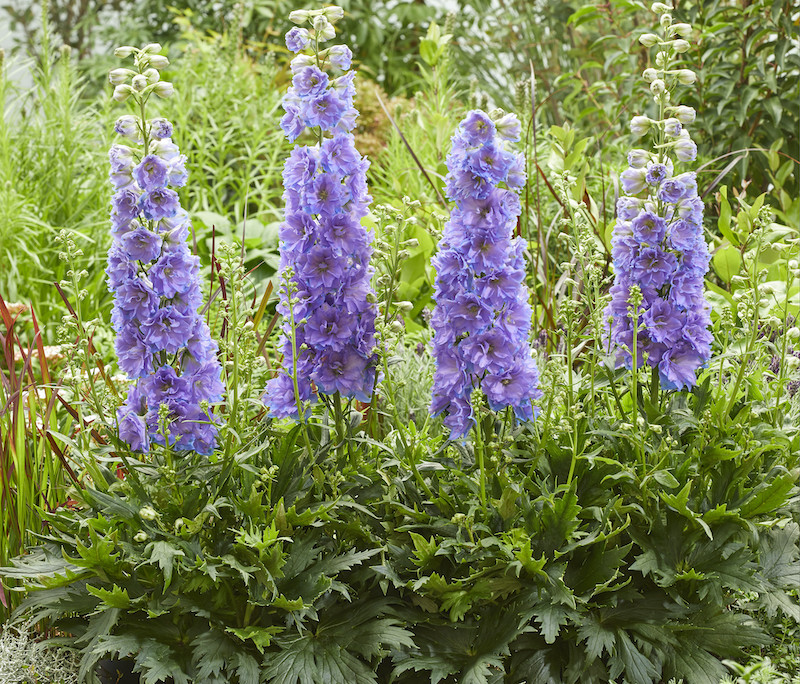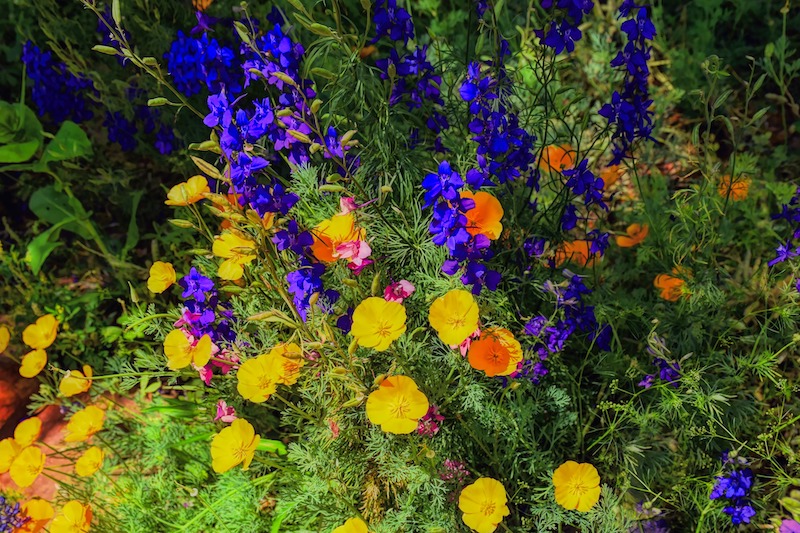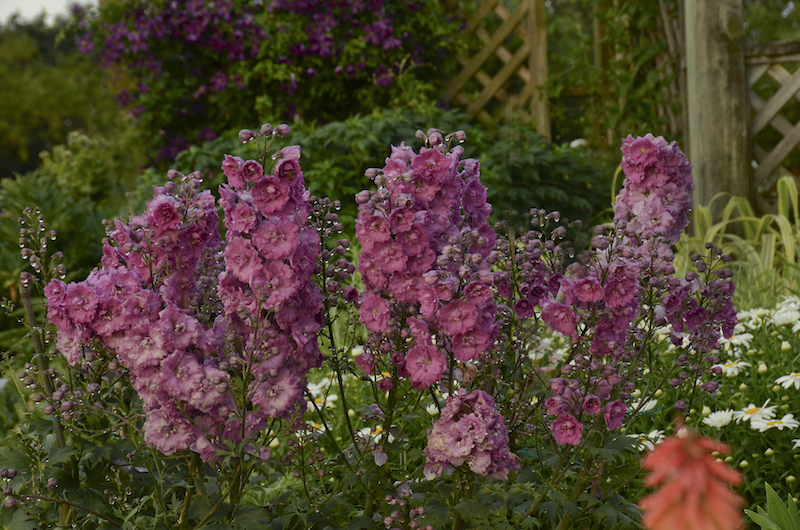Larkspur is both the common name for the perennial Delphinium and the name of the annual flower of the Delphinium family. It may seem confusing, but the plants are grown in similar conditions using many of the same techniques. Both types set seed freely and are best planted in the fall so that they can have a period of cold for stratification of their seeds.
What You Need To Plant Larkspur
- Shovel or transplanting spade
- Compost
- Arborist chips or compost for mulching
- Site with at least 6 hours of full sun and preferably late afternoon shade
- Well-draining soil
- Watering can or hose
- 10-10-10 slow-release fertilizer

Where to Plant Larkspur
Choose a location that has full sun, with either shade early or late in the day. Larkspur will tolerate drier, hotter gardening zones if it has shade at the hottest part of the day. These plants prefer well-draining soil that does not have too much clay, allowing their roots to establish well. Excluding the dwarf varieties, Larkspurs tend to be very tall when in bloom and are best displayed at the back of a garden border or along a fenceline.

Larkspur Spacing
Larkspurs are not spreading plants and tend to be much taller than wide at the base. They are best when planted close together, so that the plants can support each other. Extra staking will be needed for the largest blooming cultivars. The hollow stems of Delphinium can be brittle and collapse from heavy rains or wind. Staking of the individual flower spikes with a single bamboo cane works to quickly give support and blend into the surrounding planting. Depending on the type, Larkspur should be planted approximately 12-18 inches apart.
Steps To Plant Larkspur
Step 1 - Dig a hole that is twice as wide and the same depth as the Larkspur rootball.
Step 2 - Mix in a handful of compost in the bottom of the planting hole. This will help the soil retain moisture better.
Step 3 - Gently remove the plant from its nursery pot and loosen up any roots that appear to be rootbound.
Step 4 - Place the rootbal in the hole, keeping the base of the plant even with the surface of the soil.
Step 5 - Replace the soil around the rootball, gently firming it down to make sure there are no large air gaps around the roots.
Step 6 - Spread a handful of slow release-fertilizer around the root zone and lightly scratch it in.
Step 7 - Water the plant well around the root zone, making sure to settle all of the surrounding soil.
Step 8 - After the water soaks in well, mulch around the base of the plant with shredded leaves, compost, or arborist chips to help the soil retain moisture.

When to Plant Larkspur
Container-grown Larkspurs are best planted in the early spring after danger of frost. The seeds of annual Larkspur are best sown in place in the fall. The seeds need a period of cold to ensure proper germination and do not like to be disturbed by transplanting. Planting is best done early in the day to reduce transplant shock. The leaves will lose less moisture on cooler days that are overcast than on clear sunny days.
Watering deeply and regularly after planting will help the roots to establish with little stress. Larkspur does not tolerate dryness and does not become more drought tolerant as it matures. Planting Larkspur with other moisture-loving plants is the best way to ensure that it will thrive.
Transplanting Larkspur
Delphiniums and Larkspur are easily propagated from division, basal root cuttings, and seed. Dividing of the plants should be done every 2-3 years to promote strong flowering. The best time to divide is early in the spring as the new growth emerges. Water the plants the day before you will divide. This will help to lessen transplant shock. Make sure that the new sites for transplanting are prepared before dividing the main plant.
Larkspur roots will not tolerate drying out and will need to be planted immediately after separation. Basal root cutting can also be done early in the spring by cutting out new shoots as they emerge. Make sure that roots are attached to the cutting and simply replant in the ground or grow on in a pot with free-draining potting soil until the plant is larger.
You can plant Larkspur seeds 6 weeks before the first freeze. The seeds need a period of stratification in the cold to germinate. Sow the seeds directly into their permanent home. The seeds can also be grown in pots in an unheated greenhouse or cold frame over the winter. Alternatively, seeds can be placed in the refrigerator for 2-3 weeks before being sown early in the spring.
 |
Author Robbin Small - Published 8-22-2022 |
